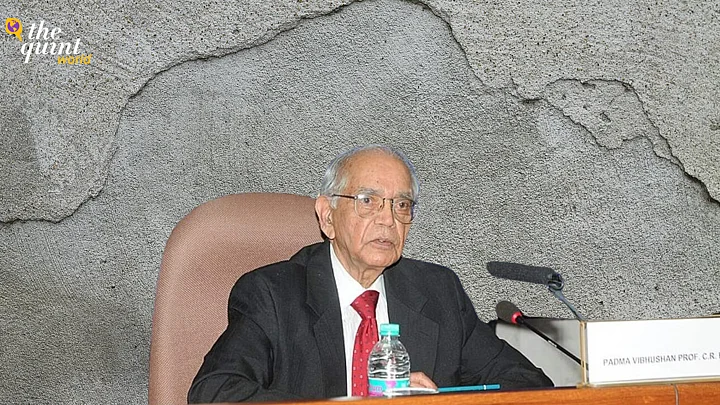Prominent Indian-American mathematician and statistician Calyampudi Radhakrishnan Rao will be awarded the 2023 International Prize in Statistics, the industry equivalent of the Nobel Prize, for his historical work in statistical theory, which revolutionised statistical thinking.
The 102-year-old will receive the award in July during the International Statistical Institute’s biennial World Statistics Congress in Ottawa, Ontario, Canada, which comes with a healthy reward of $80,000.
Guy Nason, chair of the International Prize in Statistics Foundation, said, “In awarding this prize, we celebrate the monumental work by CR Rao that not only revolutionised statistical thinking in its time but also continues to exert enormous influence on human understanding of science across a wide spectrum of disciplines.”
Born to a Telegu family in Hadagali, Karnataka, CR Rao completed his school education in Andhra Pradesh before earning his Bachelor's degree in Mathematics from Andhra University in 1940. He followed up with a Master's in Mathematics from the same university in 1941. He then obtained a Ph.D. in Statistics from the University of Cambridge in 1943.
He began his academic career as a lecturer in the Department of Mathematics at the Indian Statistical Institute (ISI) in Kolkata in 1944. He quickly established himself as a leading figure in the field of statistics, making significant contributions to the development of statistical theory and methods.
In 1964, CR Rao was appointed as the director of the newly established Central Statistical Institute in Delhi, India and the subsequent year, he became the director of the Indian Statistical Institute, a position he held until 1979.
Throughout his career, Rao has held visiting positions at numerous universities around the world, including Stanford University and the University of California, Berkeley, in the United States. He has also published over 400 research papers and several books on statistics and mathematics.
Rao is renowned for his 1945 paper, published in the Bulletin of the Calcutta Mathematical Society, with three fundamental results that created waves for modern statistics and laid the foundation for statistical tools with a wide range of applications in the sciences. Most prominently were the Cramer-Rao lower bound and the Rao-Blackwell Theorem.
A titan of the field of statistics, Rao’s far-reaching work found its way to the Large Hadron Collider, the world’s largest and most powerful particle accelerator and is also used for radar and antenna research, contributions to AI and image segregation.
(At The Quint, we question everything. Play an active role in shaping our journalism by becoming a member today.)
